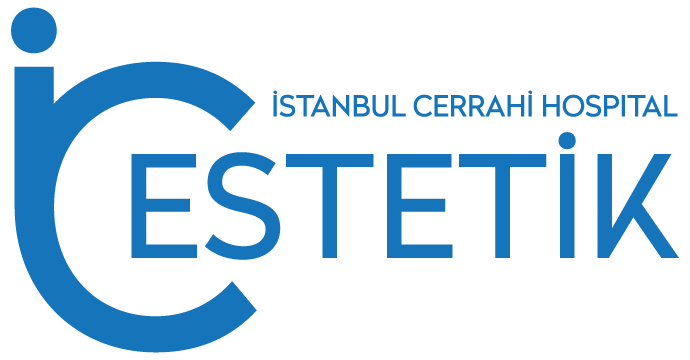Ethnic Rhinoplasty
Ethnic rhinoplasty in Turkey is a term used to encompass the nasal surgery performed on individuals of non-Caucasian descent, with the aim of enhancing the appearance and/or function of the nose while still respecting and preserving their unique ethnic features. However, it is important to note that each ethnic group has its own distinct characteristics and preferences, so it is often more appropriate to refer to specific ethnicities when discussing rhinoplasty procedures, such as Middle Eastern rhinoplasty, Hispanic rhinoplasty, African-American rhinoplasty, or Asian rhinoplasty. Although there may be some commonalities among individuals of the same ethnic background, it is crucial to recognize that each patient is unique, and surgical approaches may vary based on individual anatomy and aesthetic goals.
Common Nose Traits and Procedures by Ethnicity
Each ethnic group encompasses a diverse range of physical traits and facial structures. Within these groups, there are several common nose conditions or characteristics that often lead patients to consider rhinoplasty:
Bulbous tip: The tip of the nose appears large and fleshy, lacking definition and refinement.
Flat or broad tip: The internal cartilages that shape the tip of the nose are spread too far apart, resulting in a wider and less defined tip.
Wide, narrow, or humped bridge: The bridge of the nose may be disproportionately wide, narrow, or have a visible hump, creating imbalances in the overall appearance.
Breathing problems: Structural issues such as a deviated septum or a droopy tip can lead to functional difficulties in breathing.
Types of Rhinoplasty
Asian Rhinoplasty
Asian rhinoplasty, also referred to as Asian nose surgery, is a specialized form of rhinoplasty that focuses on addressing the unique nasal characteristics and aesthetic preferences commonly seen in individuals of Asian descent. This procedure takes into consideration the structural differences of Asian noses, such as a lower nasal bridge, wider nostrils, and softer nasal cartilage, with the goal of enhancing the nose while still preserving the individual’s ethnic identity.
Middle Eastern Rhinoplasty
Middle Eastern rhinoplasty, also known as Persian rhinoplasty or Arab rhinoplasty, is a specialized type of rhinoplasty that caters to the specific nasal characteristics and aesthetic goals commonly observed in individuals of Middle Eastern descent. This procedure aims to enhance the nose while respecting and preserving the individual’s ethnic features and cultural identity.
African-American Rhinoplasty
African-American rhinoplasty, often referred to as ethnic rhinoplasty for African-Americans, is a specialized form of rhinoplasty that focuses on addressing the unique nasal characteristics and aesthetic goals commonly found in individuals of African descent. The aim is to enhance the nose while maintaining the individual’s ethnic features and cultural identity.
Latino Rhinoplasty
Latino rhinoplasty, also known as Hispanic rhinoplasty or Latin rhinoplasty, is a specialized type of rhinoplasty that specifically addresses the nasal characteristics and aesthetic preferences commonly seen in individuals of Latino or Hispanic descent. The goal is to enhance the nose while preserving the individual’s ethnic features and cultural identity.
Ethnic Rhinoplasty Surgery in Turkey Procedure
Ethnic rhinoplasty surgery is a procedure designed to address the unique nasal characteristics and aesthetic goals of individuals from specific ethnic backgrounds. The surgery aims to enhance the nose while maintaining the person’s ethnic identity and features. While the exact details of the procedure may vary depending on the individual’s needs and desired outcomes, here is a general overview of the ethnic rhinoplasty surgery procedure:
Consultation and Preoperative Planning: The process begins with a consultation with a qualified plastic surgeon experienced in ethnic rhinoplasty. During this consultation, the surgeon will evaluate the patient’s nasal structure, discuss their aesthetic goals, and explain the potential surgical techniques that can be used to achieve the desired results. Preoperative planning is crucial to ensure personalized and tailored surgical approaches.
Anesthesia: Prior to the surgery, anesthesia is administered to ensure the patient’s comfort throughout the procedure. The type of anesthesia used will be discussed and determined during the preoperative consultations.
Incisions: The surgeon will make incisions, either externally or internally, depending on the specific technique chosen for the procedure. External incisions are typically made on the columella (the tissue between the nostrils), while internal incisions are made inside the nostrils, resulting in no visible scarring.
Reshaping and Augmentation: The surgeon will then proceed with reshaping and augmenting the nasal structures to achieve the desired outcome. This may involve techniques such as cartilage grafting, tip refinement, bridge augmentation, alar base reduction, or other modifications specific to the patient’s needs and desired results. The surgeon will use their expertise to achieve a balanced and harmonious appearance while respecting the individual’s ethnic features.
Suturing and Dressing: Once the necessary modifications have been made, the surgeon will carefully suture the incisions and apply dressing to protect the nasal tissues during the initial healing period.
Recovery and Follow-up: After the surgery, the patient will be closely monitored during the initial recovery period. The surgeon will provide postoperative instructions on how to care for the nose, manage discomfort, and promote healing. Follow-up appointments will be scheduled to monitor the healing progress and ensure optimal results.

